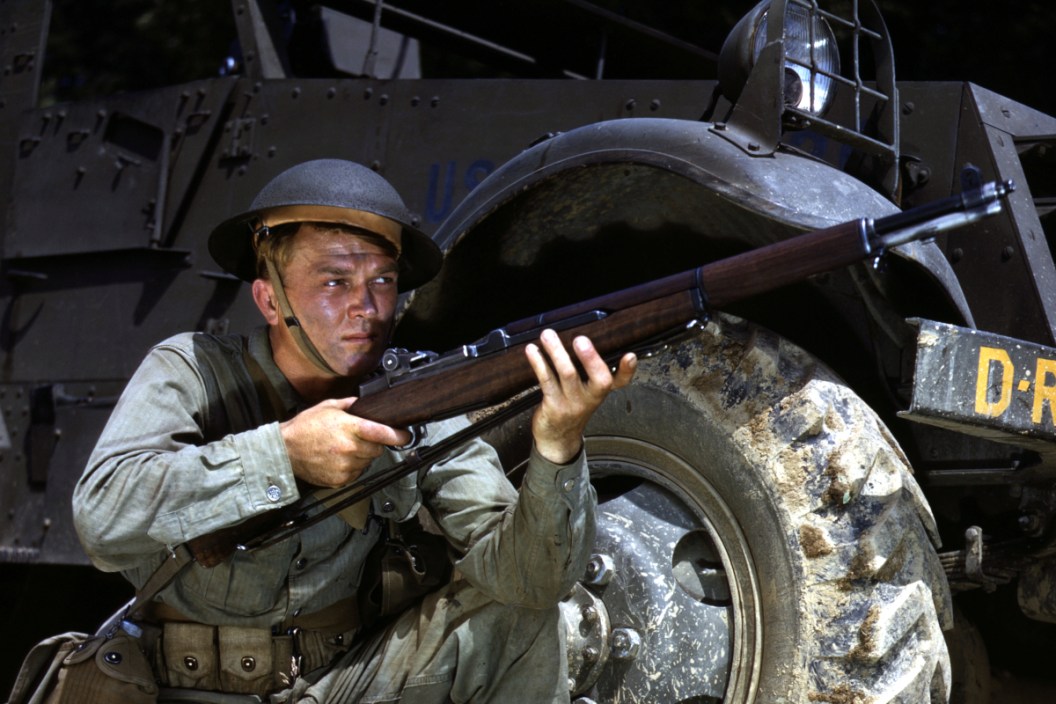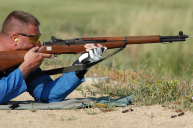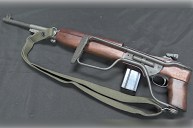This is the story of the most famous gun of World War II.
Ask any shooting enthusiast to name the most famous service rifle in U.S. Military history and odds are, at least one of the answers you will get, if not the first one, will be the M1 Garand rifle. This semi-automatic rifle was beloved by the troops who carried it into battle. In World War II, it became a legend by providing a superior rate of fire and overall firepower to U.S. Troops who were largely facing outdated bolt-action rifles.
From the gun's instantly recognizable profile to the familiar "ping" sound that came after the eight-round clip was expended out of the ejection port, even people unfamiliar with guns have often heard about the Garand. Today they are sought-after collectibles with shooting enthusiasts everywhere.
It turns out the history of the gun is just as fascinating as the rifle itself. This is the complete history of the most famous battle rifle ever used by U.S. forces.
The Inventor, John C. Garand
Ironically, one of the most famous American rifles of all time was invented by a man who was born in Canada. John Garand eventually became a U.S. citizen, but was born in Quebec in 1888. His family was large, he was one of 12 children. While the Garand family were originally famers, they packed up and moved to Connecticut when John was only 11 years old. It may seem weird to some people now, but back then of course, there were no child labor laws and the young Garand started working in a textile mill in Jewett City shortly afterwards.
According to the National Park Service, this is where the young man began learning engineering, welding, and manufacturing skills that would serve him throughout his life. As seems to be the case with many inventors, the young man showed a real penchant for designing things and that led to a design job with toolmaker Brown & Sharp Co. in Providence, Rhode Island around 1909.
The interest in tools and machining also eventually led to firearms and Garand first came under the radar of the military when he submitted a design for a semi-automatic rifle prototype to the U.S. Navy in 1916. This ended up being his big break, as he went to work with the U.S. Bureau of Standards. Finally, in 1919, he patented the M1919, which already shows hints of what would eventually become the M1 Garand. At this point the rifle was too late for deployment in World War I, but military brass knew the United States would eventually need an upgrade from the bolt-action M1903 Springfield rifle.
In one of the government's better decisions, Garand was given an experimental engineering shop at the now legendary Springfield Armory, where he set about perfecting the design. He would end up working in the Armory for the remainder of his career.
The Development of the M1 Garand
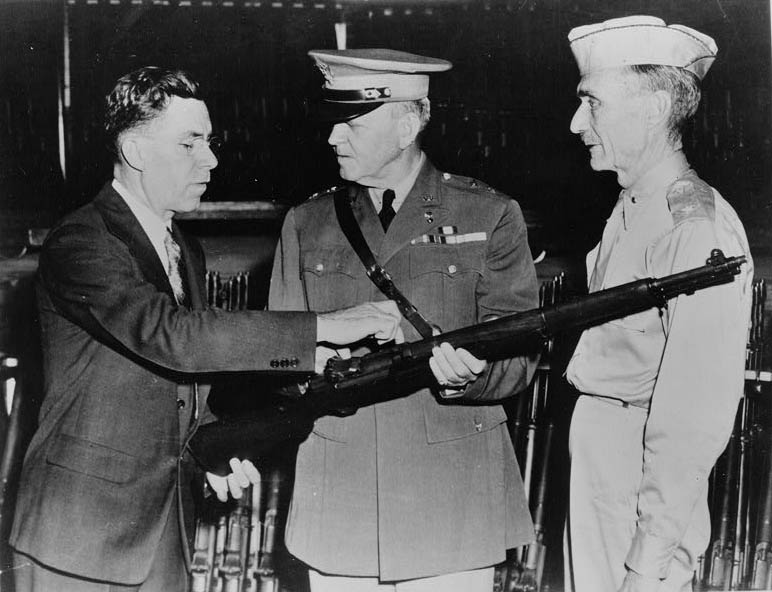
Wikimedia Commons: Office of War Information Photo
As we already mentioned, the M1919 was the first iteration of semi-automatic rifle that would eventually evolve into the Garand. From 1919 until the M1 was officially patented in 1932, Garand and his engineers changed the design over and over. Most notably they kept alternating the caliber between .30 Caliber and .276 Pedersen.
This was mostly because top brass with the U.S. Army, Navy and U.S. Marine Corps couldn't quite decide what they wanted out of the new design. Some favored the .276 on the notion that the smaller size of the cartridges might allow a soldier to carry more rounds. Still others preferred the hard-hitting stopping power of the .30-06. It was Army Chief of Staff General Douglas MacArthur who finally ended the debate. MacArthur preferred they stick with .30-06 which had been used extensively in the M1903 Springfield previously. Especially since the military still had huge stocks of the round on hand. In the end, it didn't really matter what caliber the Garand was chambered in because the rifle consistently won out military trials and testing with competitors. The choice was clear, the Garand design was going to become the military's next battle rifle.
Garand and his engineers also went back and forth between a clip and magazine format for feeding the rifle. One variant, the Model 1921 was fed with a tiny five-round magazine in the receiver. They eventually decided upon an en bloc clip system. One loaded clip held eight rounds and was ejected once the rifleman had exhausted it. This empty clip being ejected is what makes the distinctive "ping" known and loved by shooters everywhere. The first Garands also cycled off a delayed blowback system. Eventually, around 1926, Garand abandoned that idea and designed a gas operated system instead.
The first M1 Garands as we know them today were finally manufactured and shipped to the Military around 1936. It was just in time too because the United States would officially enter World War II on December 11, 1941 and Garand's design would be put to the ultimate test in the largest conflict the world has ever known.
The M1 Goes to War and "Garand Thumb."
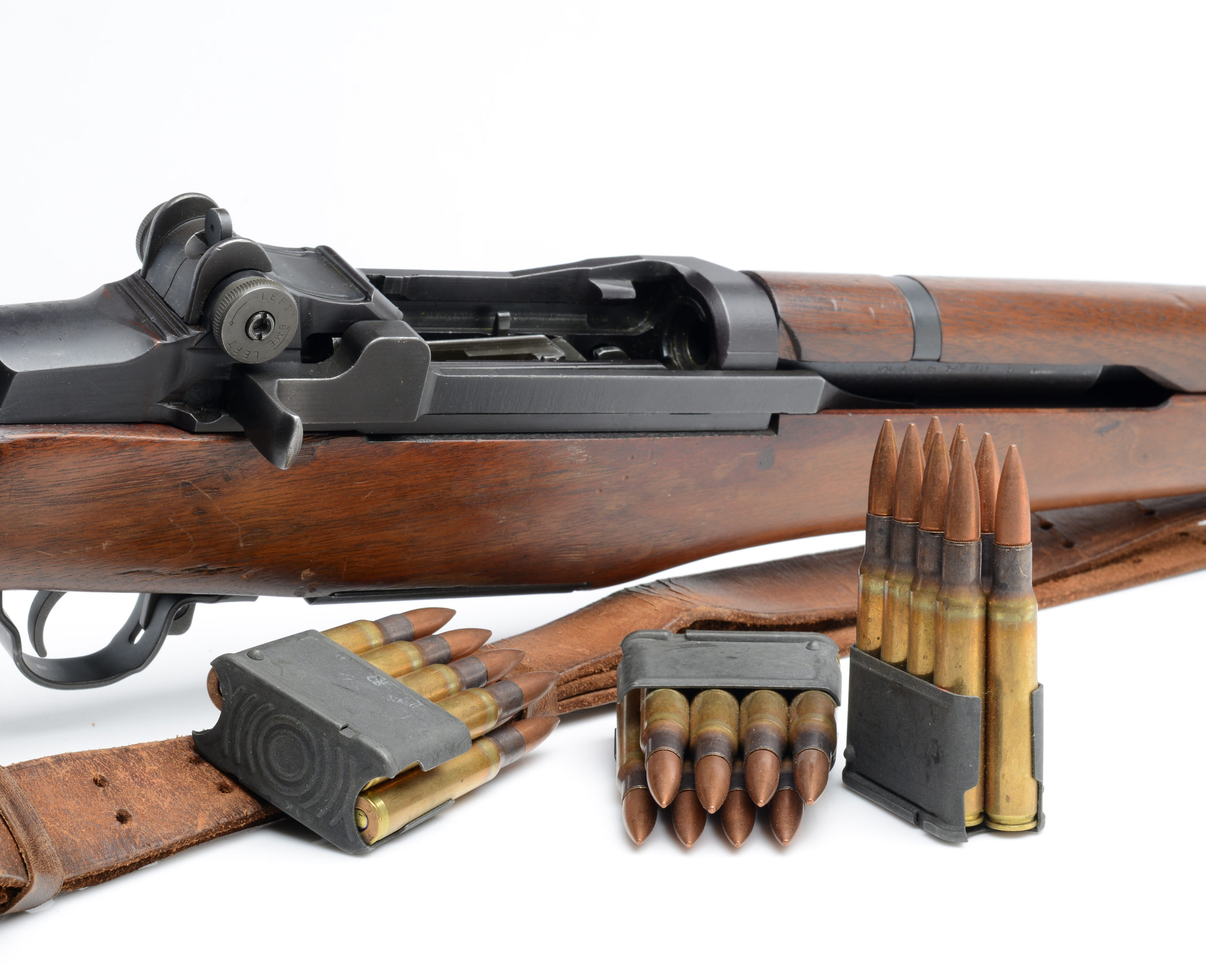
Production of the M1 Garand ramped up significantly just before the U.S. entered the war. Almost everyone saw the writing on the wall that the United States was going to have to get involved. According to the National Park Service, Springfield Armory got a 250 percent increase in budget in 1940 specifically for producing M1 Garands. The staff at the armory increased and by the time the U.S. entered the war, M1s were being built 24 hours a day. Of the 5.5 million M1s built for the war effort, an estimated 3.1 million came out of Springfield Armory.
When the United States formally entered WWII, the Garand was ready and gave U.S. Troops a distinct advantage by having a standard issue semi-automatic. The Germans and Japanese were still standard issuing bolt-action rifles. Guns like Gewehr chambered in 7.92x55mm Mauser packed plenty of firepower but had a significantly slower rate of fire than what U.S. Troops could dish out. It was easier for U.S. Troops to make follow-up shots and lay down covering fire during heavier firefights.
Even our British Allies were still using bolt-action rifles in the form of the Lee-Enfield Mk I. The British did briefly consider adopting the M1 but rejected it because they felt it wasn't reliable enough. We're not sure what they were looking for, especially after the rifle proved itself everywhere, from the beaches of Normandy to the island of Iwo Jima. After all, in January of 1945, the rifle received the ultimate praise when General George S. Patton called it "The greatest battle implement ever devised," in a letter. Enough said.
If there was one issue with the gun, it's something that came to be known as "Garand thumb" by the troops. When reloading a fresh clip into the gun, the tendency by many people is to use their thumb to press the clip into place. There's just one problem, if your hand is not up against the bolt, the bolt will fly forward as soon as the clip is pressed into place. If an unlucky soldier's thumb just happened to be in the way, well, it would end up bruised and smashed by the bolt. The video above from gun guru Hickok45 better demonstrates what we're talking about.
In the end, most troops adapted quickly on the right way to reload this weapon. Those who didn't likely learned the hard way after messing up their thumb multiple times. Despite the small design flaw, the Garand was a winner with the troops and it helped change the tide of the war in the favor of the Allies.
After the War.
World War II ended in September of 1945 and although the Garand is known as one of the iconic firearms of that war, it had a service history that extended far beyond the Great War. The M1 Garand was the standard issue service rifle until 1958. When the U.S. entered the Korean War in 1950, the Garand went there too. Some surplus M1s were provided to South Korea's troops, but plenty more were built well after World War II. Two companies were even awarded post WWII contracts for Garand production. This included Harrington & Richardson (H&R), which also produced the popular sporting name New England Firearms. Still other rifles were produced by International Harvester.
Even though production ended around 1958, a handful of Garands saw some limited use up until the Vietnam War. Although, it's worth noting that it was mostly in the hands of South Korean troops and National Guard and Reservists by that point. Still other rifles were modified with new flash hiders, or were modified away from the standard rear sights to a new custom scope mount and were shipped to other countries for use by their troops as sniper rifles.
U.S. Troops shifted to the M14 battle rifle as the standard issue service rifle for the Army and Marines in 1959. The M14 design used many of the innovations of the Garand as a base but improved upon them. It's a testament to John Garand's design that the M14 is still in service to some capacity and many of the M14's design elements have since trickled down into aspects of civilian sporting rifles.
We should mention John Garand himself here. Many might think he struck it rich due to so many rifles being needed for the war effort. However, in what was a truly selfless display, Garand gave the design to the government for free and he never profited a penny from any royalties. In fact, he rejected any and all monetary offers for the design! Such as thing would be completely unheard of today and Garand is probably not recognized enough for what may have been the ultimate display of patriotism. He was later decorated with the Meritorious Civilian Award and a Medal for Merit. He was also inducted in the U.S. Army Ordnance Corps Hall of Fame. He worked at Springfield Armory until 1953, at which time he was presented a special M1 Garand highlighted in the video above. He spent the rest of his days in Springfield living the quiet life before passing away in 1974 at the ripe old age of 86.
The M1 Garand Today.
All these years later, the legacy of this rifle lives on. Even though there was a ton of surplus, the price of an original Garand has gone up considerably in recent years. Much of the price depends upon history and condition of course. One of the best bets for getting one is to use the Civilian Marksmanship Program (CMP). It's a non-profit marksmanship instruction program that still sells surplus M1s to this day. The program refurbishes rifles, many of which have been re-imported back into the U.S. after being sold overseas. It does take a little bit of extra paperwork to get one through this program, and you won't know exactly what you're getting until it arrives. However, it's worth looking into it since you can get one of these rifles for significantly less than the private market. Check out their website for more information.
The M1 Garand is truly a firearm that has stood the test of time and deservingly so for a firearm that likely shaped the course of history due to its service during the war. Even people not familiar with guns will at least recognize this as being a WWII service rifle. Today, the rifle is still often used for parades, gun salutes and other military displays. It's safe to say that the legacy of John Garand and his masterpiece design are destined to live on forever.
For more outdoor content from Travis Smola, be sure to follow him on Twitter and check out his Geocaching and Outdoors with Travis YouTube channels.
NEXT: THE 5 BEST HOME DEFENSE SHOTGUNS
WATCH
